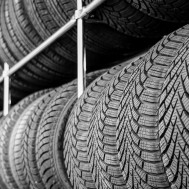A seal is only as effective as the material it’s made of. So, what is there to consider when selecting the right rubber compounds to use for a given seal? One important factor is permeability, since even the best fitting seals will fail if the liquids or gasses they’re meant to resist are able to pass right through them. Get the basics of rubber compound permeability below.
What is rubber permeability?
Permeation is the rate at which gas or liquid molecules pass through a compound. When it comes to rubber compounds, these rates are typically very low. However, any amount of permeability must be considered when designing critical seals.
Critical seals are used in medical instruments that undergo autoclaving and have moisture-sensitive internal components, automotive fuel seals for low-emission vehicles, vacuum seals that must not lose suction, and more.
What affects permeability?
Permeant molecule size. The liquids and gasses critical seals are designed to work against are composed of molecules with various sizes and weights (measured in kinetic diameter and molecular weight respectively). These factors can make the molecules more or less likely to pass through rubber compounds. Polymers and certain fillers are used to limit the rate of molecular transfer through a rubber barrier, which is very important in critical gas or fluid applications.
Temperature. Typically, the higher the temperature, the higher the rate of diffusion. A common example of temperature affecting permeability is the air pressure in car tires. Your tire pressure changes approximately 1-2 PSI with every 10 degrees of change in air temperature. That’s why having the right barrier inside your tires is critical for overall tire performance on both hot or cold days.
Other factors affecting permeability are the concentration of the permeant at the barrier and the pressures at the opposite side of the barrier.
Rubber Formulation Considerations
Filler particle size. Carbon black and clay filler particles have various mean sizes. Small particles perform well in finished products, but can adversely affect processing. Compound viscosity increases when more small particle fillers are introduced, which can cause mold flow issues. Creating a dense filler by using smaller filler particles helps prevent molecules from traveling through.
Filler absorption. Some fillers can actually absorb certain permeants. For example, clay fillers are water absorbent, meaning they increase the permeability of water vapor. This absorption then allows water to diffuse through a polymer more easily.
The polarity of the polymer. Different rubber base polymers have varying polarity, and substances with the same polarity will dissolve each other. IE, “like dissolves like.” This is why EPDM swells in oil and fuels. Both EPDM polymers and oils are nonpolar. NBR polymers have increasing levels of polarity, making them repel oils and fuels and reduce swelling. That’s why matching the polarity of rubber barriers and the polarity of their potential permeants is important.
Questions about the permeability of rubber compounds?
Get in touch with one of our engineers today.
